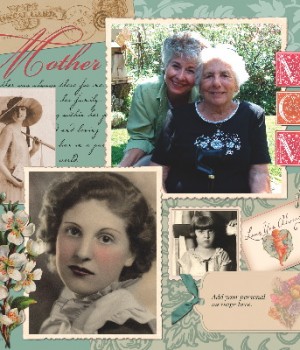
Although scrapbooking is one of the hottest activities in the arts and crafts market, the art of preserving memorabilia and memories in book form can be traced back for centuries in one form or another. Perhaps the most interesting bit of history is that Mark Twain was a prolific “scrapbooker,” gathering and pasting bits of his life and travels into an estimated 300 scrapbooks. In fact, he probably held the first patent on a scrapbook product when, in 1872, he developed a self-adhesive scrapbook, which allowed users to moisten a pre-glued area of a page and simply press the item into place-an innovation that, all told, put $50,000 into the author and humorist’s pocket.
While scrapbooking has quickly grown into a multi-billion dollar industry, the main motivation behind the practice has remained the same: to preserve memories. The proliferation of digital cameras, easy and affordable access to photo prints, a wide variety of scrapbook-related products and organizations, it’s no wonder that this hobby has flourished.
But today’s version of scrapbooking plays a larger role than simply the preservation of memories. Considering that many scrapbookers –– perhaps the majority –– are SAHMs (stay at home moms) or WAHMs (work at home moms) who spend much of their time caring for others, scrapbooking gives them an activity they can call their own. While this is mere hypothesis, it seems that moms often have a hard time taking time away from their families for themselves but because they’re preserving family moments and memories, it’s easier to justify the time and money spent on scrapbooking.
Although scrapbookers are typically women and many are moms, the popularity of the craft has spread to many other demographics. Enthusiasts are now beginning to represent a broader population, with broader interests and varied lifestyles. While the main motivation for scrapbooking remains the same throughout the population, there are other reasons that this craft has become so pervasive among large numbers of people.
Typical photo albums often are simply a compilation of photographs with, perhaps, a few captions. Scrapbooks, on the other hand, consist of various layouts, with fancy papers, color palettes, cut-outs, ephemera, text and other artistic touches. The effort that goes into each page is not only heartfelt, but requires planning and creativity. It’s this creativity that allows people who may not otherwise have the confidence, ability or time to pursue other more traditional art forms to express themselves.
Equally or even more important than its role as a conduit for creativity, scrapbooking is also a highly social activity. Crop parties –– get-togethers where scrapbookers spend a few hours creating pages, sharing ideas and their stashes of papers, cut-outs and ephemera –– are extremely popular. Whether regularly scheduled meetings at someone’s house, a scrapbooking store or photo retailer’s space or more informal gatherings, the social aspects of scrapbooking are, for many, an important component of the experience.
Those who don’t have a local social network (and even those who do) often turn to the Internet for interactions with others. There are hundreds of online groups –– some with membership rolls that exceed several thousand people –– that are dedicated to the craft. Members share technical tips, design ideas, new product discoveries as well as successes (and failures) with different techniques.
It should come as no surprise that smaller groups have emerged within the larger scrapbooking world. Naturally, geography brings some people together, even online. Some come together because of their aversion to “cute”; others would rather share ideas with those who, like themselves, are child-free and/or single; still others focus on Christian ethics and beliefs. Perhaps the biggest division among scrapbookers is between purists who believe that everything should be done by hand and those who are creating their layouts and even background pages and embellishments digitally. And then there are those who like to apply embellishments to their pages and don’t mind that the pages don’t close flat, while others prefer a neater, more traditional appearance to the book.
There’s also a whole group of people who have taken the basic tenets of scrapbooking in a different direction, with journaling, altered books and many other forms of creativity and memory-keeping. We’ll explore those in future columns as well.
The fact that these different segments exist within the broader scope of scrapbooking indicates that the activity has reached or even exceeded a certain level of maturity. It’s also clear that scrapbooking continues to have a huge growth potential as the craft reaches even greater numbers of people and broader populations –– from small towns to soldiers serving overseas. Since images are at the heart of the scrapbook, it’s important that the photo industry embrace this activity and work to bring the two together. yy
Image courtesy of PhotoTidings




